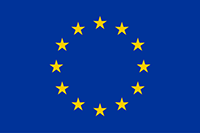I am looking for information as
Researcher

Industry

Patient

Biobanking concerns me: a great joint effort at public engagement during EBW 2017
This year, the Italian node, BBMRI.it, will play a very active role in the European Biotech Week 2017 (EBW 2017), coordinating a great joint effort at public engagement. “Biobanking concerns me” will comprise different initiatives ranging from the local to the national level that address the key players involved in biobanking, i.e. the younger generation, patients and families, citizens, researchers and health professionals, as well as journalists and industry.
From September 25th to 29th, fourteen BBMRI partner biobanks will open their doors, with activities including interactive labs, guided visits and debates. Although activities may be varied, they will have a common purpose: “Open doors in biobanks” is expected to become a recurring event that will gradually involve more and more institutions.
On September 28th and 29th, the city of Naples will host a national event not just aimed at getting the public to understand biobanking-based research, but also to get people into it. The programme will kick off with a guided tour tracing living biological material that was preserved over time in order to keep records and generate knowledge. Some of the highlights between the different sections of the route will be Cappuzzelle, the Archaeological Museum, the anatomic machines at Sansevero Chapel, and Corporea in Città della Scienza, the first interactive human body museum. On September 28th, there will also be a national workshop titled “Biobanking, what for?” that will highlight the close links between biobanking and precision medicine as well as the challenges involved, the latter including N-1TRIALS, big and complex health data and imaging biomarkers. On September 29th, there will be another route titled #thanks to my biological sample, I can… that will take visitors around Corporea. Participants will have the opportunity to engage in debate with researchers and biobankers from the main Campania biobanks in four different locations and to experiment with human biological samples, extracting human DNA and reproducing it in 3D from human bio-images.





